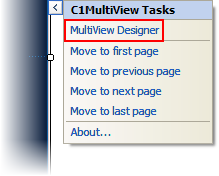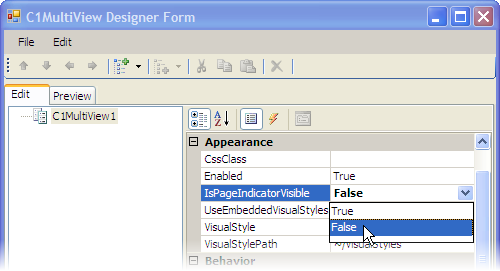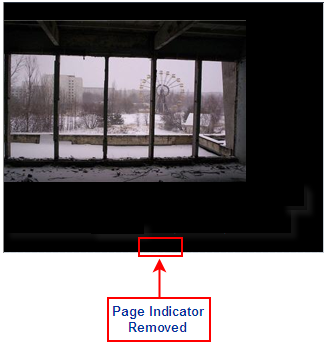 )
to open the C1MultiView Tasks menu and then select MultiView
Designer from the list.
)
to open the C1MultiView Tasks menu and then select MultiView
Designer from the list. In this topic, you will learn how to remove C1MultiView's page indicator in Source view, in Design view, and in code. This topic assumes that you have created an AJAX-enabled ASP.NET project that contains a ScriptManager control (see Creating an AJAX-Enabled ASP.NET Project) and a C1MultiView control.
In Design View
Complete the following steps:
1.
Click C1MultiView's smart tag ( )
to open the C1MultiView Tasks menu and then select MultiView
Designer from the list.
)
to open the C1MultiView Tasks menu and then select MultiView
Designer from the list.

The C1MultiView Designer Form opens.
2. In treeview, select C1MultiView1 to reveal its list of properties.
3. Locate the IsPageIndicatorVisible property, click its drop-down arrow, and select False.

4. Click OK to close the C1MultiView Designer Form.
5. Save the project and open it in a Studio for iPhone-compatible browser.
In Source View
To remove the page indicator, add IsPageIndicatorVisible="False" to the <cc1:C1MultiView> tag so that the markup resembles the following:
<cc1:C1MultiView ID="C1MultiView1" runat="server" height="250px"
IsPageIndicatorVisible="False" width="300px">
In Code
Complete the following steps:
1. Import the following namespace into the project:
Imports C1.Web.iPhone.C1MultiView
•C#
Using C1.Web.iPhone.C1MultiView;
2. Add the following code to the Page_Load event:
C1MultiView1.IsPageIndicatorVisible = False
•C#
C1MultiView1.IsPageIndicatorVisble = false;
3. Save the project and open it in a Studio for iPhone-compatible browser to execute the program.
 This topic
illustrates the following:
This topic
illustrates the following:
In this topic, you removed the page indicator from the C1MultiView control. The result of this topic will resemble the following image:
